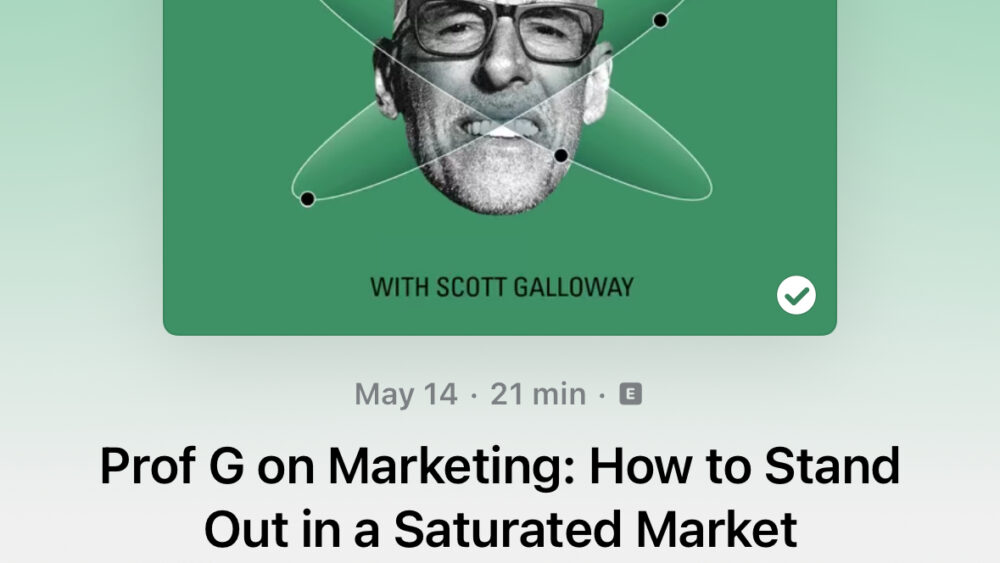In today’s media environment, your brand is what Google says it is.
This is a line I use often to remind people the first impression most people will have of your brand won’t be made in person or even over the phone – it will happen on page one of Google.
Do you know what kind of impression you’re making?
Imagine I was having lunch with a New York Times reporter and I found out she was close to her deadline on a story for which you’d be a perfect source.
Let’s say I gave her your name and recommended that she Google you and reach out for an interview.
I think of this as a direct search – someone knows your name and heads to Google to find you. This is the most basic of searches and you should be found immediately. But unfortunately, that isn’t always the case.
Statistics show us that journalists, who are increasingly overworked (smaller newsrooms) and overloaded with options (more people pitching them than ever before), are most often heading online to look for sources for stories, and to vet those sources.
If you make yourself more discoverable you have a chance of earning media coverage that will build thought leadership and provide valuable credibility for you in your industry.
But even if you are highly credentialed, that isn’t enough if your online presence is lacking and doesn’t best represent all you have to offer. If this New York Times journalist decided to look you up, there are four tests they will put you through to determine if you are worthy of a call or email.
Test #1 – Can you be found easily in a Google search on your name?
The first and most basic test is one that a large number of people don’t pass. Remember, the NYT reporter is on deadline and likely won’t click through more than a page or two looking for you.
If you pass test #1 – meaning the reporter sees your website on page one of Google or perhaps a bio page of your employer with your contact information – please move on to test #2 below. Keep in mind that you don’t pass unless the reporter can click through to a place that has either your contact information or that of your publicist, so not all social media channels allow you to pass.
If you fail test #1 – there are a number of potential reasons why.
Do you have a website? If you don’t, that’s probably why you aren’t owning search results of your name.
If you do have a website – awesome – but you need to look at search engine optimization (SEO) if your own website isn’t landing on the first page of a search on your name. It could be that your website isn’t optimized or you have built your website on a URL that doesn’t connected back with your name. For example, is your website address connected to your name (www.RustyShelton.com) or something more general (www.PRguy.com)?
Another potential reason you are not popping up is that your name is really popular, or someone famous shares it with you. If that’s the case, I’d encourage you to think about potentially adding in a middle initial or middle name to your “brand” and using that consistently going forward to you can fully “own” it online.
Test #2 – Once the NYT reporter lands on your website, does it encourage or discourage a booking?
Reporters have no shortage of options when it comes to experts they can feature or source in their articles and when they visit your website everything they find there is either encouraging or discouraging a booking.
What encourages a booking?
- Media logos of recent interviews, which tell the journalist that someone else has already vetted your experience and credentials.
- A professional design and overall tone, which tell the journalist that you’re credible.
- A press room or media page, which allows the journalist to access recent TV interviews & other coverage to get a feel for how well you do on the air.
Have these three items on your website? You pass test #2 – move to test #3.
What discourages a booking?
- Poor design. Few things look worse to the media than an unprofessional website, so this could cause the journalist to click the back button on move on to the next source.
- A blog that hasn’t been updated in years. It always amazes me how many people leave a decaying blog on their website – this gives the media (and potential customers) the impression that you aren’t current.
- Mistakes. Does your website contain errors, spelling issues or other items that make the journalist question your professionalism or even just make it hard to navigate your website (error messages on pages, etc.)? If so, that could send the journalist on to their next source.
If you have any of these issues on your website, clean them up immediately so you can pass test #2 and head onto #3.
Test #3 – Can the reporter quickly reach you or your publicist?
You may read this and think it’s the easiest test of the bunch but the key to passing it is not just having a “contact” tab on your website, it’s ensuring that you provide a phone number or email address – not just a contact form.
I don’t know about you, but when I fill out a contact form on someone’s website I don’t expect a quick response. That doesn’t mean there aren’t good reasons to have one (we use one to manage potential client inquiries), but if a reporter is on deadline and they need to reach someone quickly, it isn’t likely that they are going to fill out a contact form and hope to hear back.
If you have clear contact information on your website under either the press tab or the contact tab (or better yet, both!), congrats – you pass test #3 and can move to the last test below.
If you failed test #3, the good news is that the solution is simple – make sure you have an email address or phone number that is easy to find on your website. If you’re worried about spammers grabbing your email address, just use this format: rusty(at)sheltoninteractive(dot)com.
Test #4 – Can the reporter find anything on page 1 or 2 of Google that discourages a booking?
You have passed the first three tests, so you’re almost there.
The reporter found your website, was impressed with it and was able to find your contact information to request an interview.
The final test takes us back to the first line of this blog post: Your brand is what Google says it is.
When the NYT reporter heads back to Google for one last review of your brand, what will she find?
What encourages a booking?
- Other media coverage. Similar to the press room on your website, if the reporter sees your name featured in a number of other media outlets as part of your Google search results that’s a good thing (as long as the media coverage isn’t for something negative of course).
- Links to speeches, professional accolades and other positive accomplishments will help.
- A blog post you’ve written on that topic that is smart and opinionated.
If your search results are full of positive items like these, congrats – you’re about to do an interview with the New York Times!
What discourages a booking?
- Negative links. No surprise here, but the biggest thing that makes a journalist nervous about sourcing you are negative comments, stories or reviews. If a search on your name reveals a large amount of such content, it’s going to be very difficult for you to pass test #4.
- Old video footage that doesn’t reflect the quality of your message. Remember those YouTube videos of you that your intern shot and loaded four years ago? That local TV affiliate interview where you went off on that tangent about the breakfast you had that morning? If you have control over those videos, take them down immediately. If those videos are on someone else’s YouTube or Vimeo channel, you can request that they take them down but there’s never a guarantee that they will. Try anyway.
If you have any of these issues with your Google results, work hard to clean them up so you don’t cost yourself valuable publicity opportunities.
Good media coverage is increasingly being driven by discoverability, so if you’re not passing the four tests above you could be missing media opportunities even as you read this article.
The good news is that with the right approach you can pass all four and get more media coverage than ever moving forward.




